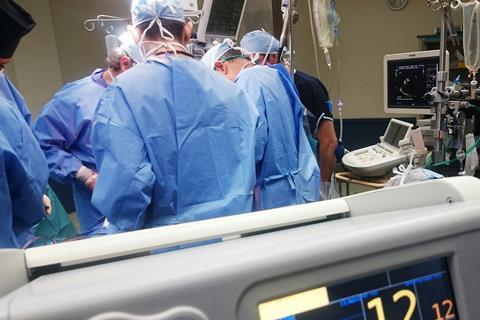Inadequate infection prevention and control staffing levels are associated with higher rates of healthcare-associated infections, according to a new study published today in the American Journal of Infection Control.

The study, conducted by the APIC Center for Research, Practice & Innovation, summarizes a pilot project to evaluate a new online calculator aimed at providing facility-specific recommendations for infection prevention staffing.
READ MORE: Dangerous surgical site infections can be reduced with simple prevention protocol
READ MORE: Students to swab first responder vehicles through a CDC-funded infection control initiative
Infection prevention and control programs with staffing levels that are below expected demonstrated significantly higher rates of central line-associated bloodstream infections (CLABSI), catheter-associated urinary tract infections (CAUTI), Clostridioides difficile infections, and colon surgical site infections.
For example, 25% of facilities staffed at lower-than-expected staffing levels had elevated CAUTI rates, as compared to only 7% of hospitals with expected or above expected staffing levels.
Staff levels
In an analysis of 390 acute care hospitals that participated in the study, the calculator tool identified nearly 80% (79.2%) as having insufficient staff levels in this area.
Historically, hospitals utilized benchmarks that relied on a ratio of infection preventionists (IPs) per inpatient bed (ranging from 69-100 beds in the last decade). This traditional “one size fits all” method for calculating appropriate IP staffing levels is inadequate and outdated in the modern complex healthcare environment.
Recognizing the need for a more customized recommendation for IP staffing, APIC developed an online staffing calculator with a predictive algorithm that allows users to enter information about their hospital facility and receive an assessment of staffing needs specific to them. The calculator adjusts optimal staffing ratios based on factors such as the complexity of services provided or the presence of an emergency department, burn unit, stem cell transplant unit, or inpatient rehabilitation unit.
Novel tool
“This facility-specific calculator for infection prevention and control staffing levels is a completely novel tool for our community and one that is clearly needed to help hospitals advocate for adequate resources to keep patients and healthcare workers safe,” said Rebecca Bartles, DrPH, MPH, CIC, FAPIC, executive director of the Center for Research, Practice & Innovation at APIC and lead author of this study. “We look forward to updating the calculator soon with new categories and more granularity based on our experience with the beta tool and to making it available to the IP and broader healthcare communities.”
Additional details from the study include:
- Hospitals included ranged in size from eight beds to more than 2,000 beds
- Staffing levels ranged from 1 IP per 40 beds at small hospitals (fewer than 25 beds) to a peak of 1 IP per 161 beds in hospitals with 301-400 beds
- More than 85% of respondents who believed their staff levels were inadequate came from hospitals found to have lower than expected IP staffing.
APIC calls on hospital leadership to require use of the staffing calculator to evaluate the need for IP staff, and more importantly, make needed investments in IP staffing per the customized staffing recommendations for their institutions. Additionally, APIC urges the U.S. Centers for Medicare & Medicaid Services (CMS) and standards bodies to require use of the APIC staffing calculator to determine appropriate IP staffing needs.
Topics
- APIC Center for Research, Practice & Innovation
- catheter-associated urinary tract infections
- central line-associated bloodstream infections
- Clinical & Diagnostics
- Clostridioides difficile
- colon surgical site infections
- Infection Prevention & Control
- infection prevention staffing
- infection preventionists
- Innovation News
- Medical Microbiology
- One Health
- Public Health
- Rebecca Bartles
- Tania Bubb
- USA & Canada







No comments yet